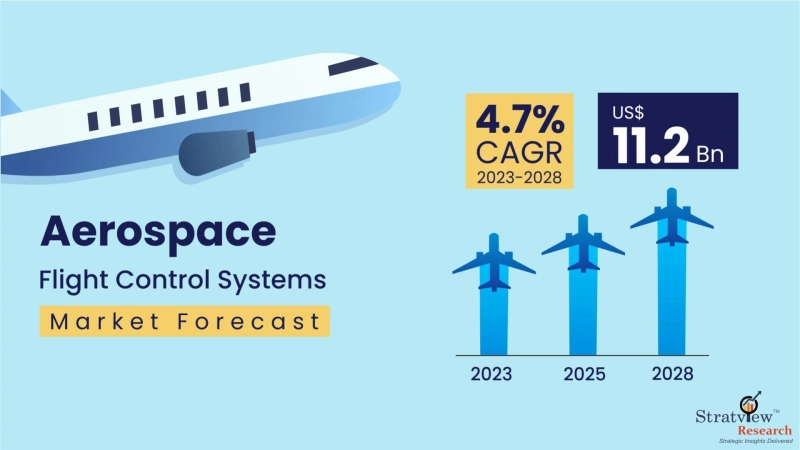The aerospace flight control system has undergone remarkable transformations since the early days of aviation, evolving from basic mechanical linkages to sophisticated, computer-driven systems that ensure safe and efficient flight. This evolution reflects technological advancements, changing demands of the aviation industry, and an unwavering commitment to enhancing flight safety and performance.
According to Stratview Research, the aerospace flight control systems market was estimated at USD 7.1 billion in 2022 and is likely to grow at a CAGR of 4.7% during 2023-2028 to reach USD 11.2 billion in 2028.
The Past: Mechanical Beginnings
In the early 20th century, flight control systems were rudimentary, relying on mechanical linkages connected directly to the pilot's controls. These systems, consisting of cables and pulleys, enabled pilots to manipulate the aircraft's ailerons, elevators, and rudders to maintain control. While functional, these mechanical systems required significant physical effort from pilots, limiting their effectiveness, particularly in larger and more complex aircraft.
The Transition: Introduction of Hydraulic Systems
The introduction of hydraulic systems marked a significant leap in flight control technology. By utilizing hydraulic actuators, these systems amplified the pilot’s inputs, reducing the physical effort required to maneuver the aircraft. This transition allowed for the development of larger, more complex aircraft, including commercial airliners and military jets, which demanded more precise and responsive control systems. Hydraulic systems also provided the foundation for the development of more sophisticated flight control mechanisms.
The Present: Fly-by-Wire Technology
The advent of digital technology in the latter half of the 20th century revolutionized flight control systems with the introduction of fly-by-wire (FBW) technology. FBW systems replace traditional mechanical and hydraulic controls with electronic signals transmitted by wire, significantly enhancing the precision, reliability, and efficiency of flight control. Modern FBW systems integrate advanced computers that process pilot inputs, environmental data, and aircraft performance parameters to make real-time adjustments. This not only improves flight stability and safety but also reduces aircraft weight and maintenance requirements.
The Future: Autonomous and AI-Driven Systems
Looking ahead, the future of aerospace flight control systems is poised to be shaped by advancements in artificial intelligence (AI), machine learning, and autonomous technology. AI-driven flight control systems will enable predictive maintenance, optimize flight paths for fuel efficiency, and enhance decision-making in complex scenarios. Autonomous flight control systems, which are already being tested in drones and unmanned aerial vehicles (UAVs), hold the promise of reducing pilot workload, minimizing human error, and enabling new applications such as urban air mobility and autonomous cargo transport.
Integration with Smart Technologies
The future will also see greater integration of flight control systems with other smart technologies, including the Internet of Things (IoT) and digital twins. These integrations will allow for real-time monitoring, predictive analytics, and seamless communication between various aircraft systems, further enhancing safety and operational efficiency.
Conclusion
The evolution of aerospace flight control systems from mechanical linkages to advanced AI-driven technologies underscores the industry's continuous pursuit of innovation and excellence. As technology advances, flight control systems will become even more sophisticated, paving the way for safer, more efficient, and more autonomous aviation. The journey of flight control systems is a testament to human ingenuity and the relentless drive to push the boundaries of what is possible in aviation.


